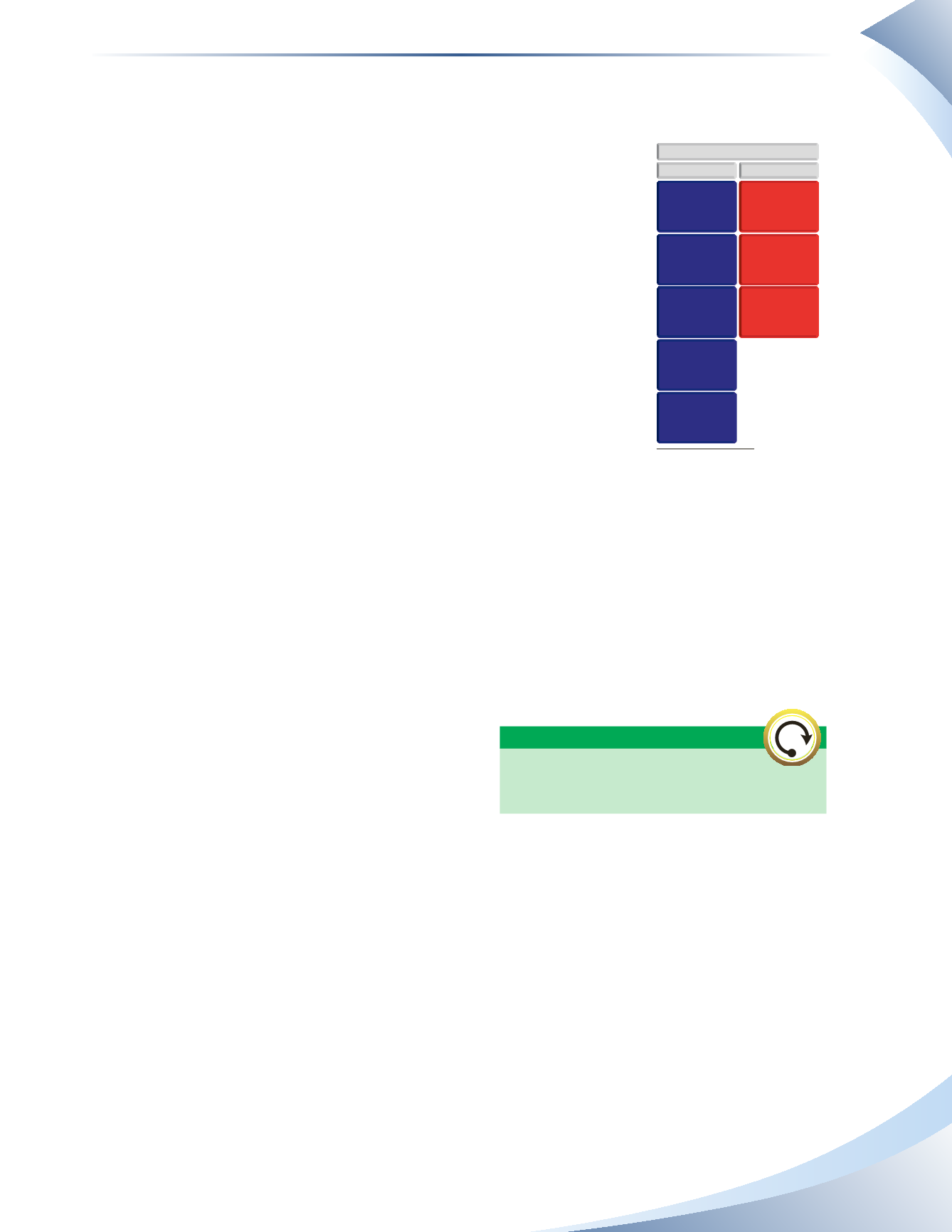
Chapter 2
Linking Personal Accounting to Business Accounting
29
Sequence of Assets and Liabilities
The assets of a business are listed in sequence according to their liquidity.
Liquidity
is the ease with which the asset can be converted to cash.
Cash is the most
liquid asset
and is therefore listed first on the balance
sheet, followed by accounts receivable (the amount of money owed by
customers to the business), inventory, and so on. Property, plant and
equipment, such as buildings and machinery, are the least liquid and are
therefore listed last.
Liabilities are also listed in sequence in a similar way. Those that
are payable within the shortest amount of time are listed first (e.g.
accounts payable). These amounts are usually due within one year of
the balance sheet date. Debts that will last longer, such as bank loans,
are listed last.
Equity vs. Net Worth
Equity is the net worth of a business, after all assets have been sold and all liabilities have been paid.
Different business organizations classify who this equity belongs to in the following ways
•
In a proprietary business (owned by a single person), it is referred to as
owner’s equity
.
•
In a partnership, it is referred to as
partners’ equity
.
•
In a corporation, it is referred to as
shareholders’ equity
. Owners of a corporation buy shares
to indicate ownership and own a percentage of the company.
•
Some government institutions refer to it as
accumulated surplus (deficit)
.
All these terms represent equity of an organization,
which is similar to net worth introduced in personal
accounting. For the next few chapters in this text-
book, we will focus on a proprietary business and will
use the term owner’s equity to describe the equity of
the business. At the end of the accounting period,
the ending owner’s equity balance can be calculated
as follows.
Ending Owner’s Equity = Beginning Owner’s Equity + Owner’s Contributions + Net Income (Loss) - Owner’sWithdrawals
Owner’s contributions
is the amount of cash or assets invested in the business by the owner.
Owner’s withdrawals
is the amount of cash or assets taken by the business owner for personal use.
If a company is brand new and has just started operations, then beginning owner’s equity will be
equal to $0. If a company has been established for at least one accounting period, then the begin-
ning owner’s equity is equal to the previous period’s ending owner’s equity.
2
ASSETS
BALANCE SHEET
LIABILITIES
CASH
ACCOUNTS
RECEIVABLE
PROPERTY, PLANT
& EQUIPMENT
PREPAID
EXPENSES
INVENTORY
ACCOUNTS
PAYABLE
UNEARNED
REVENUE
BANK LOAN
BUSINESS
FIGURE 2.2
The accounting equation is
Assets = Liabilities + Owner’s Equity
WORTH REPEATING


